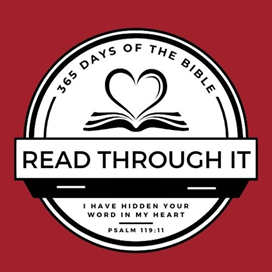Read Through It
If you are interested in a program to read through the Bible in chronological order, this page provides overviews of each book of the Bible, as well as, Maple Hill’s Facebook discussion page. Each day’s reading includes 2 - 4 chapters. As you read, take notes and jot down questions to share or discus with others.
If you have questions, or an interest in discussing anything you read, reach out to us through the Facebook page, or contact the church office and we will be glad to assist.

Overview and Book Introductions
Expand the sections below for an Overview of the Read Through It program, as well as introductions to each of the books of the Bible. You may download the introductions to the Old Testament and New Testament books to provide context for each book, as you read through them.
The Adventure Begins
The Adventure Begins
The Bible might look like one book, but in actuality it is a collection of sixty-six books, written by forty writers over a period of 1500 years (1400 BC – 100 AD). These writers lived in various parts of the world – Israel, Egypt, Babylon, Greece, Turkey, Italy, and more. Yet, in spite of the great variety of writers and locations, the Bible holds together as a consistent, accurate message from God to humanity.
How does this happen? The Bible’s accuracy depends on the guidance of God’s Holy Spirit who oversaw and guided each of these forty writers to ensure that the message from God was trustworthy and true. The Bible is like the human Owner’s Manual, provided by our Creator to help us know who God is and how we should live – for now and for eternity.
Our goal is to have each member read through the Bible chronologically in 2024. I know before we ever start, that completing this goal is quite a challenge. If you get behind, don’t give up. Jump in and start again. God will bless whatever parts of His Word that you put into your heart. His Word is powerful and will do its work in your heart and life.
Join us on this adventure to discover God’s plan for your life. We’ll learn more together than we ever could alone.
Complete Overviews of Old Testament Books
Click the download link to see the documented introductions for each of the Old Testament books.
Complete Overviews of the New Testament Books
Click the download link to see the documented introductions for each of the New Testament books.

